The end-Permian mass extinction is the greatest life crisis during the Phanerozoic, which eliminated more than 90% species in the marine realm, resulting in widespread development of microbialites for the dramatical decrease of grazing pressure and bioturbation. Common occurrence of microbialites is the feature of the Precambrian strata, so the widespread microbialites near the Permian-Triassic boundary is regarded as an anachronistic facies, which indicates a primitive ecosystem similar to that of the Precambrian after the end-Permian mass extinction.
Although lots of studies have been performed on the Permian-Triassic boundary microbialites (PTBMs), these works mainly focused on stratigraphy, morphology, structures and macro-/microfossils of the PTBMs. We still know little about the microbes constructing the PTBMs, because on the one hand microbes can hardly be mineralized to fossils, and on the other hand the PTBMs were commonly undergone intense diagenesis, making the preservation and identification of microbe fossils more difficult.
Recently, Dr. ZHENG Quanfeng, Prof. LI Yue and ZHANG Hua from the Nanjing Institute of Geology and Palaeontology, Chinese Academy of Sciences, collaborating with researchers from South China Sea Institute of Oceanology of Chinese Academy of Sciences and Nanjing University, made a comprehensive study on the PTBMs from 8 localities in South China. The research results have been published in the international journals Palaeogeography Palaeoclimatology Palaeoecology.
Their study found that a specific type of microbe fossils with high abundance and low diversity commonly occurred in the PTBMs of South China. This microbe fossil comprises a laminated stalk and an endpoint spheroid. The spheroid is about 20-40 μm across, composed of micritic magnesian calcite/dolomite wall and calcite spar infillings. The laminated stalk, generally several to hundreds of microns, consists mainly of multiple “stacked-cup” laminae of micron-sized magnesian calcites/dolomites. Calcite microspars and spars can fill the inter-laminae spaces. This microbe fossil is very similar to the Precambrian benthic cyanobacteria fossil Polybessurus bipartitus in morphology. And a modern morphological counterpart, which is also a cyanobacterial benthos, is living in coastal Bahamian environments. So we tentatively named this microbe fossil as Polybessurus-like, and interpreted it as the calcified remains of a benthic unicellular coccoid cyanobacteria and its extracellular polymeric substances (EPS). These coccoid cyanobacteria secreted EPS unidirectionally to form laminated stalks, through which they can not only attach to the substrate in the coastal shallow marine, but also lift themselves upward, both of which can make these cyanobacteria get more sunlight for photosynthysis. Polybessurus-like fossils are the key contributors to the PTBMs. With different growth patterns of Polybessurus-like fossils, different morphotype PTBMs formed, including stromatolites, thrombolites and dentrolites.
This study revealed the main microbe contributors to the PTBMs of South China, as well as formation mechanisms of different morphotype PTBMs. The results also present us a picture of the microbial biota in the coastal marine environments on carbonate platforms near the equator during the Permian-Triassic interval, which has great significance to our knowledge about the marine ecosystem after the end-Permian mass extinction.
This work was supported by the Key Research Program of Frontier Sciences of the Chinese Academy of Sciences, the Strategic Priority Research Program of Chinese Academy of Sciences and the National Natural Science Foundation of China.
Reference: Zhang, X.Y., Zheng, Q.F.*, Li, Y., Yang, H.Q.*, Zhang, H., Wang, W.Q., Shen, S.Z., 2020. Polybessurus-like fossils as key contributors to Permian-Triassic boundary microbialites in South China. Palaeogeography, Palaeoclimatology, Palaeoecology, 552: https://doi.org/10.1016/j.palaeo.2020.109770.
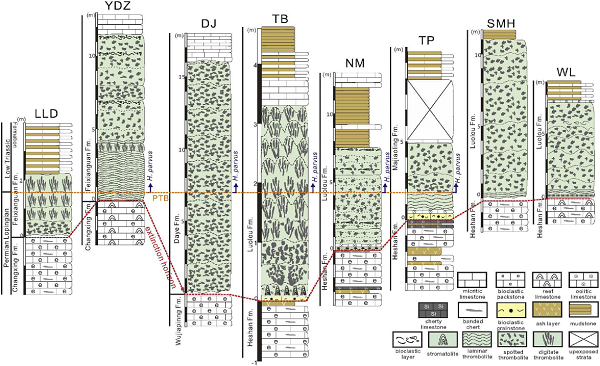
Lithological columns of the studied sections
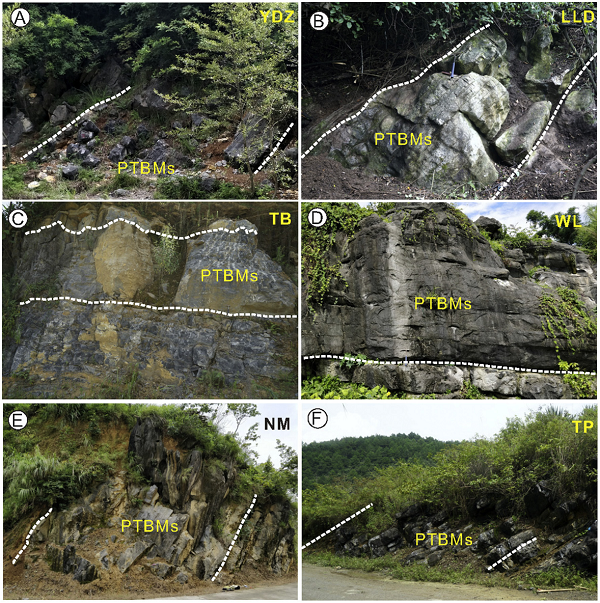
Outcrop photos of the studied Permian–Triassic boundary sections
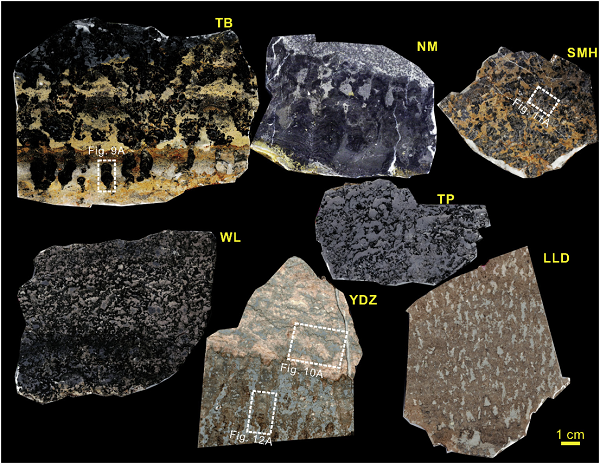
Polished slabs of microbe-bearing microbialites in the studied sections

Microphotographs and line drawings of microbe fossils in the PTBMs of the South China
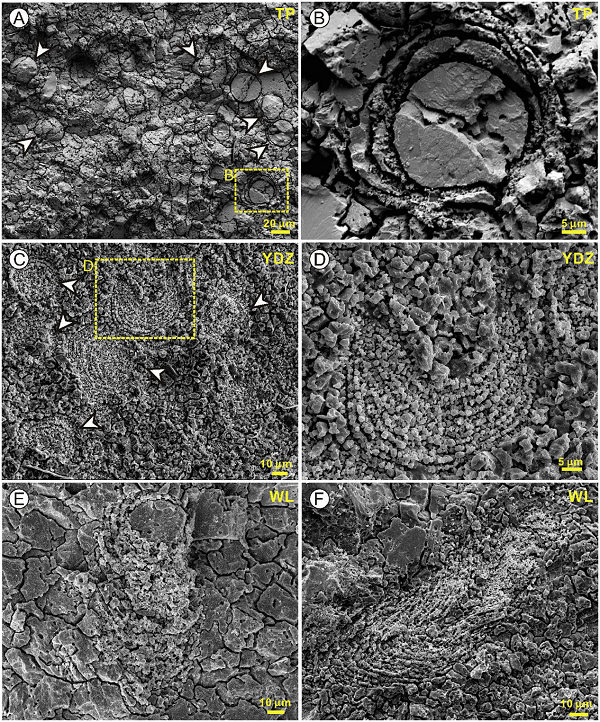
SEM photos of microfossils in the PTBMs of the South China
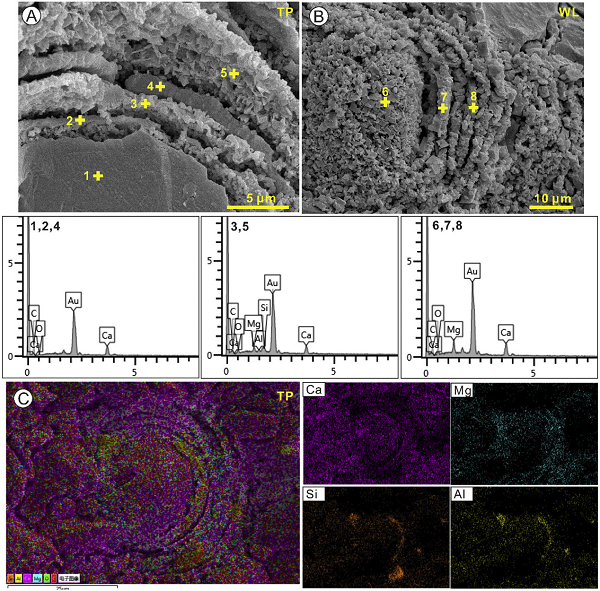
SEM images and EDS analysis results of microbe fossils in the PTBMs of South China
Download:
